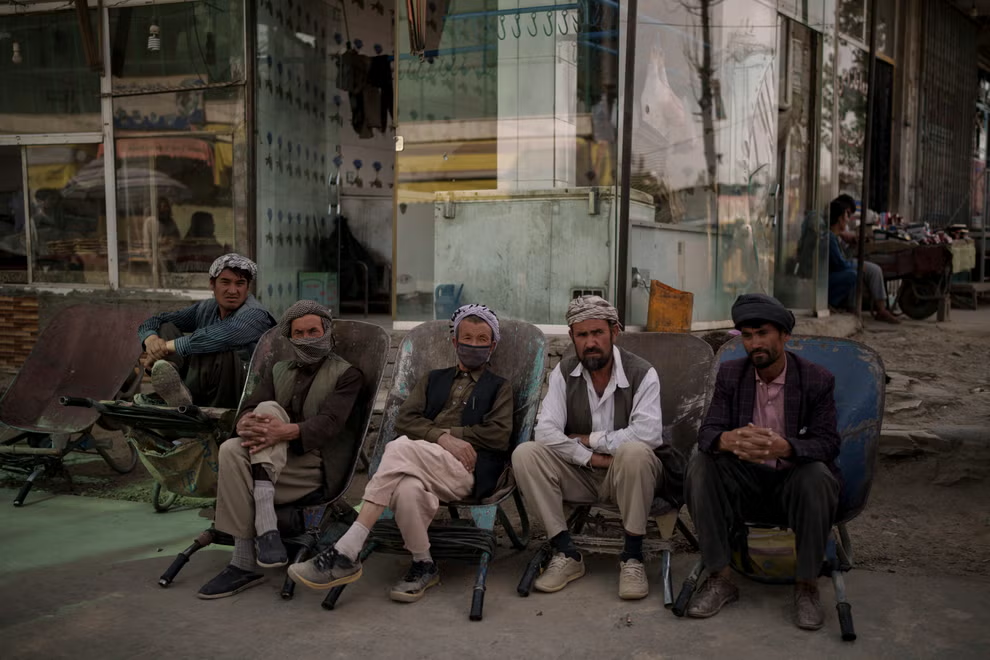Introduction
Poverty remains a significant challenge in modern economies, defined by insufficient access to essential resources and basic necessities, including food, clean water, housing, healthcare, education, and employment opportunities. The eradication of poverty seeks to enhance the economic and social conditions of communities by promoting equitable access to resources and opportunities for all individuals. Recognizing the critical nature of this issue, the United Nations has designated poverty elimination as the foremost objective among the Sustainable Development Goals (SDGs), with a target to achieve this by 2030.
Over the last ten years, the number of people living in poverty in Afghanistan has at least doubled, driven by complex political and security issues. If these troubling trends continue, many families could fall into even greater levels of poverty. According to the third report from the Afghanistan Welfare Monitoring Survey (AWMS) released in October 2023, almost 70 percent of households are unable to fulfill their basic needs. Additionally, the World Food Program reported that around 12.4 million people are experiencing acute food insecurity in 2024. The Income and Expenditure-Labor Force report noted that the poverty rate was 47.1 percent in Afghanistan in 2020; however, there is no official data on the poverty rate since 2020. Two primary factors have contributed to poverty in Afghanistan: declining private sector activity, which leads to low economic growth, and rapid population growth. In this article, we aim to examine Can the private sector in Afghanistan help alleviate poverty.
The role of the private sector in poverty reduction
Private firms play an increasingly vital role in the growth of developing countries through their investments and the dissemination of best practices. Their contributions are not only instrumental in driving economic growth but also in reducing poverty and benefiting society as a whole through several interconnected channels.
Tax Contributions and Public Services
Taxes paid by private firms provide essential revenue for public services like healthcare and education. When these services are designed to support impoverished populations, they can improve workforce health and skill development, enhancing productivity and economic output.
Capital Investments and Job Creation
Investments in new factories and retail stores create job opportunities, which are crucial for alleviating poverty. Stable employment helps individuals support their families and fosters further economic diversification through the growth of related industries.
Competition, Efficiency, and Productivity
By fostering competition, private firms enhance efficiency and productivity, leading to lower prices for consumers. This accessibility benefits lower-income populations and encourages innovation, ultimately contributing to sustainable long-term economic growth.

Can the private sector in Afghanistan help alleviate poverty?
The private sector in Afghanistan faces significant obstacles that hinder its ability to effectively reduce poverty, despite its critical role in promoting economic growth and development. While private firms are essential for job creation, tax contributions, and fostering competition, the current conditions in Afghanistan severely limit their potential impact.
Lack of Appropriate Infrastructure
One of the primary challenges is the lack of appropriate infrastructure and support systems necessary for business operations. According to the World Bank, the decline in private sector activities has contributed to a staggering 25 percent contraction in Afghanistan’s economy. This downturn has led to increased unemployment and heightened poverty levels. Many businesses have either closed or are operating at more than 30 percent below their capacity, significantly restricting their ability to grow and create new jobs. Consequently, these conditions not only hinder the creation of new jobs but also increase prices for consumers due to reduced competition, which in turn exacerbates poverty. Additionally, the banking system is plagued by limitations, with businesses struggling to access funds and secure loans. Frequent electricity outages further disrupt operations, while the absence of a clear and positive vision for the country’s future creates an atmosphere of uncertainty that discourages investment.
Wait and See Approach
Fear and uncertainty about the future significantly exacerbate poverty in Afghanistan by creating a cycle that stifles economic growth and job creation. When businesses adopt a “wait and see” approach, they delay crucial investments needed for expansion and innovation, leading to fewer job opportunities and higher unemployment rates. This results in declining household incomes, making it increasingly difficult for families to meet their basic needs and pushing more individuals into poverty. Additionally, the lack of confidence in the private sector deters both domestic and foreign investment, further limiting capital available for business development. This reduction in investment not only stifles economic activity but also diminishes government revenue from taxes, which are essential for funding public services that could alleviate poverty.
Reduction in customer Demand
Another critical factor impacting the private sector’s ability to alleviate poverty is the significant decline in consumer demand. With approximately 70 percent of the Afghan population unable to meet basic needs, consumer spending has drastically diminished. According to the World Bank, this lack of purchasing power has led to a dramatic drop in demand for goods and services, with small and medium-sized enterprises reporting an 80 percent decline in sales and larger companies experiencing a 69 percent decrease. As consumer demand wanes, businesses struggle to maintain operations, resulting in further layoffs and exacerbating the cycle of poverty. Reduced consumer spending can lead to diminished production, job losses, and increased unemployment, which contribute to recessionary pressures in the economy. This recession occurs when the economy contracts over time, with lower consumer spending being a major driver of this decline. The decrease in consumer demand significantly impacts private sector activity, accounting for approximately 30% of its reduction, thereby hindering efforts to alleviate poverty.

Conclusion:
The private sector in Afghanistan struggles to alleviate poverty due to a combination of significant challenges, including inadequate infrastructure, political and economic instability, and a severe decline in consumer demand. The lack of appropriate support systems and reliable access to financing limits business growth and job creation. Additionally, fear and uncertainty about the future discourage both domestic and foreign investment, further stifling economic activity. With approximately 70 percent of the population unable to meet basic needs, consumer spending has sharply decreased, leading to substantial declines in sales for businesses. This creates a cycle of reduced production, increased unemployment, and heightened poverty levels. Consequently, without addressing these critical obstacles, the private sector cannot effectively contribute to poverty reduction in Afghanistan.


